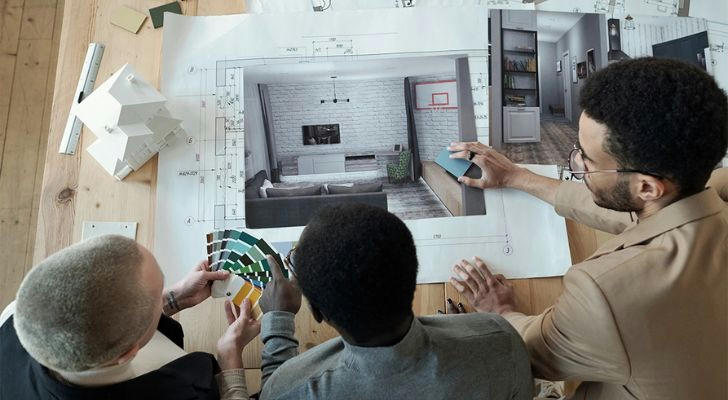Choosing the Best Interior Design Course: Five Key Factors

In today’s world filled with creativity and inspiration, interior design has become an increasingly popular career choice. Whether for residential, commercial, or public spaces, interior designers play a vital role. However, selecting the right interior design course is crucial for those looking to develop in this field. This article explores five key factors to consider when choosing the best interior design course, enhanced by real user cases and supported by data to help you make an informed decision.
Course Accreditation and Reputation
Accreditation is an important consideration when selecting a course. Many schools and institutions offer interior design programs, but not all are accredited. For example, Jessica chose the accredited Parsons School of Design, believing that the accreditation added to her competitiveness in the job market. According to a survey by the Council for Interior Design Accreditation (CIDA), graduates from accredited programs have a higher employment rate of approximately 88% compared to 75% for non-accredited programs. This distinction can significantly impact job prospects.
Course Content and Teaching Quality
Interior design is a field that balances theory and practice, making the diversity of course content and teaching quality essential. Mark, for instance, selected the interior design course at the University of California, Los Angeles (UCLA). The program covers various aspects, including foundational design principles, materials knowledge, and space planning. According to the Bureau of Labor Statistics, interior designers with formal education earn a median annual salary of around $56,000, but those from top-ranked programs can earn upwards of $70,000 in their first few years. Mark noted that the hands-on projects and case studies allowed him to apply what he learned in real-world situations, significantly boosting his design skills and confidence.
Flexibility in Learning Methods
Modern learning methods are increasingly diverse, and flexibility is a key factor when choosing a course. Emily, a full-time working mother, opted for an online program that enabled her to study while taking care of her family. The online interior design course she attended offered flexible scheduling, allowing her to access course materials anytime and anywhere. Data from a recent study showed that 70% of online interior design students reported being satisfied with their ability to balance work and study commitments, highlighting the effectiveness of flexible learning options.

Career Development Support
Another important factor in interior design courses is career development support. Alex chose Georgia Institute of Technology, which provides rich career guidance and networking opportunities. According to a report by the National Association of Colleges and Employers (NACE), students who participated in internships while in school are 50% more likely to secure a job upon graduation. Through the school’s organized job fairs, Alex connected with several design firms and ultimately secured an internship position, laying the groundwork for his future full-time job. He stated that this support was crucial for his career development.

Tuition and Return on Investment
Finally, tuition is a significant factor every student must consider. Understanding the tuition structure and its transparency can help with financial planning. According to a report from Education Data Initiative, the average cost of an accredited interior design program ranges from $10,000 to $30,000 per year. Sarah chose an affordable online course and received a scholarship, allowing her to minimize debt. She analyzed the program and found that the career prospects and salary levels in interior design were promising, making it a worthwhile investment. Graduates from top programs can expect a return on investment (ROI) of up to 150% within five years.
Conclusion
Choosing the best interior design course is an important and complex process. By focusing on course accreditation and reputation, course content and teaching quality, flexibility in learning methods, career development support, and tuition and return on investment, you can confidently make an informed decision. The right course for you is not necessarily the most expensive or the most popular; it should meet your personal needs and career goals.
Relevant Resources and Links
1.Interior Design Accreditation Bodies
• American Society of Interior Designers (ASID)
• International Interior Design Association (IIDA)
• Council for Interior Design Accreditation (CIDA)
2.Online Course Platforms
• Coursera
• edX
• Skillshare
3.Interior Design Related Books
• Principles and Practice of Interior Design
• Space Planning and Design
• Sustainable Interior Design
Recommended Interior Design Course List
1.Rhode Island School of Design
2.UCLA Extension
3.University of Miami
4.Parsons School of Design
5.Georgia Institute of Technology
